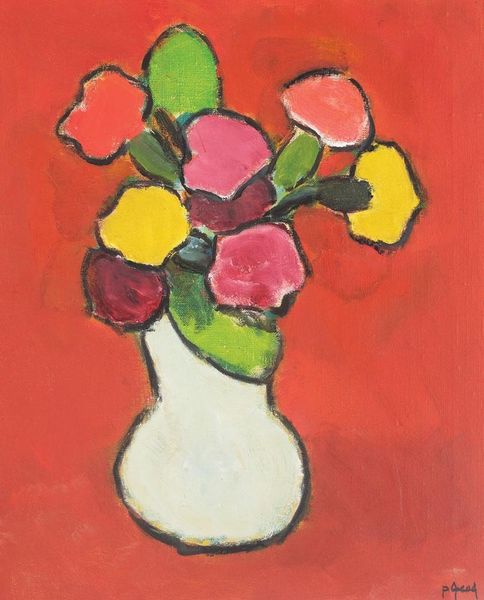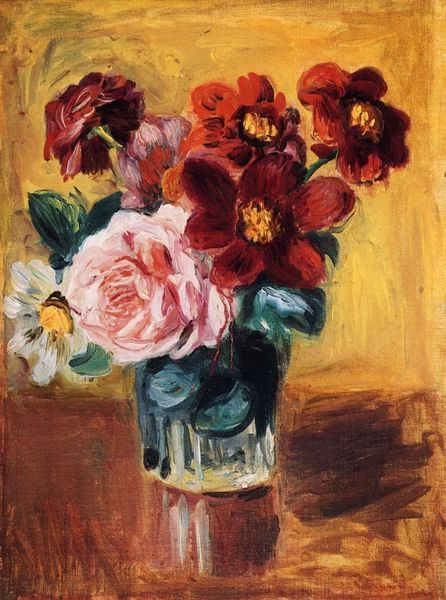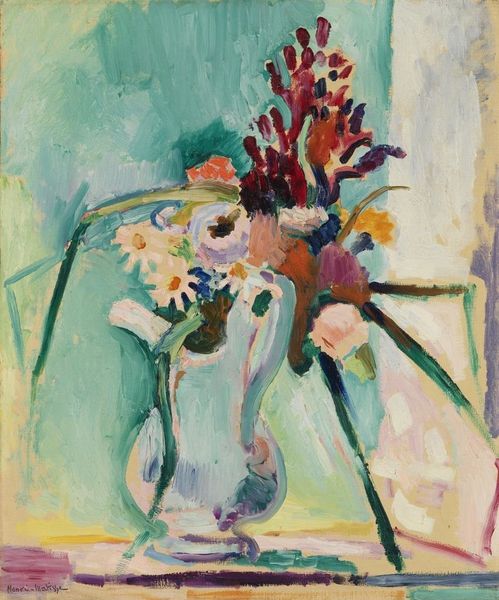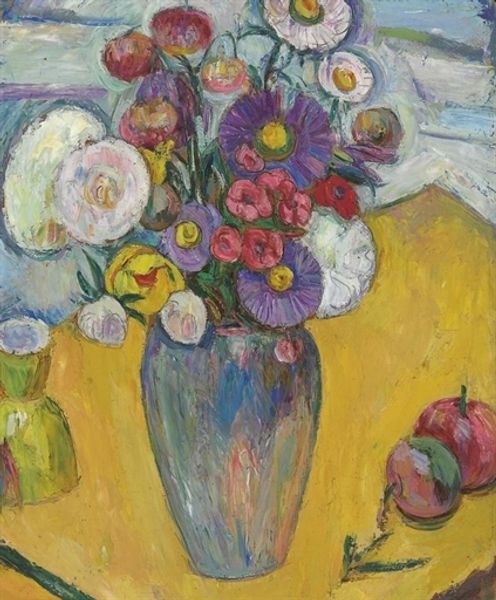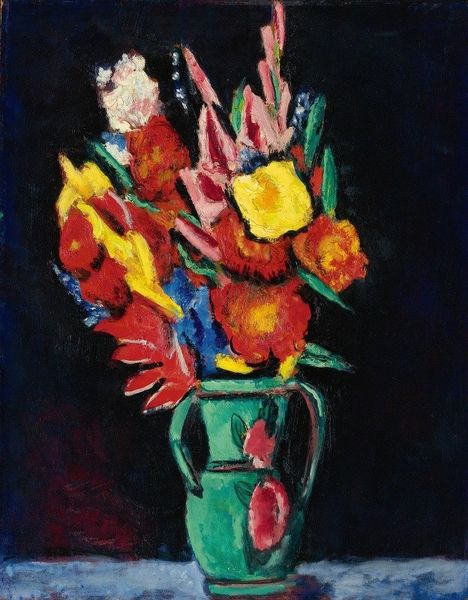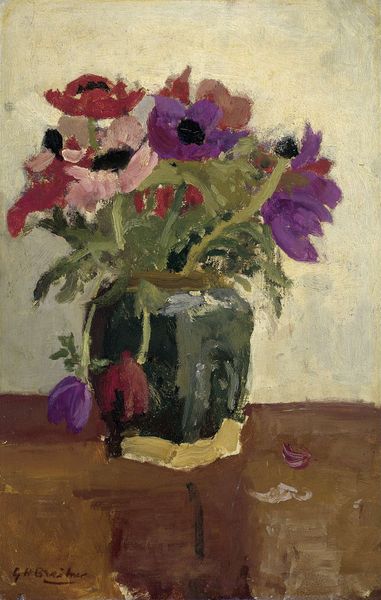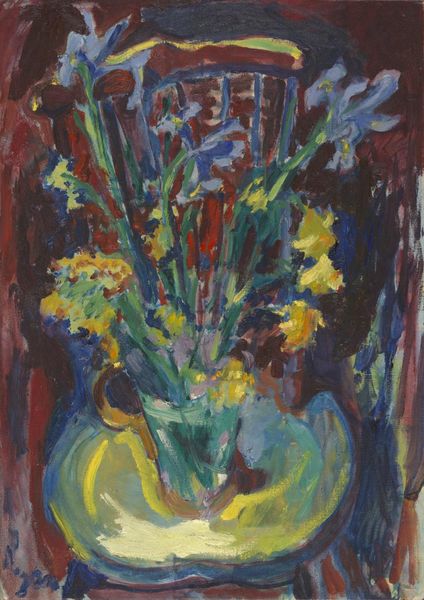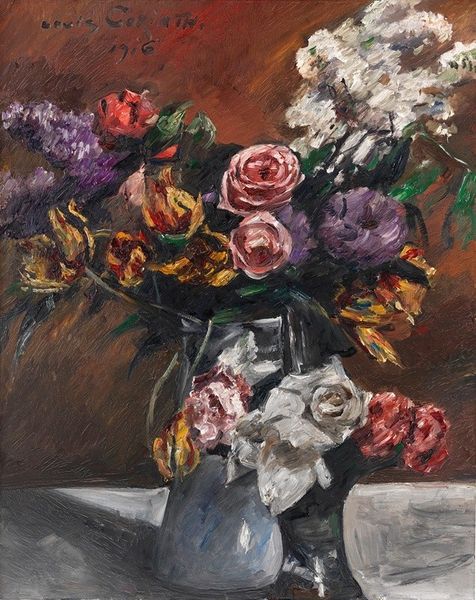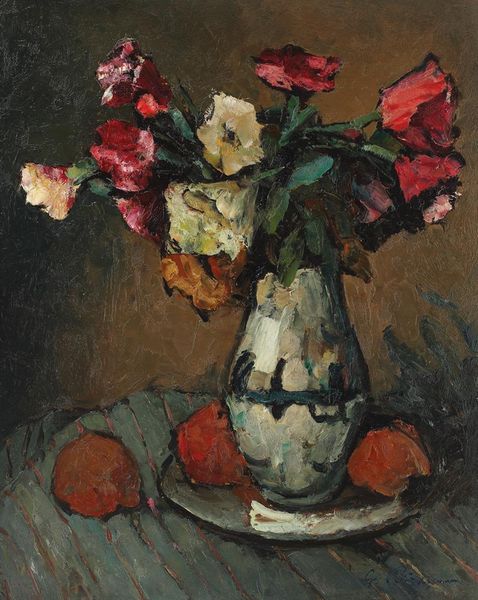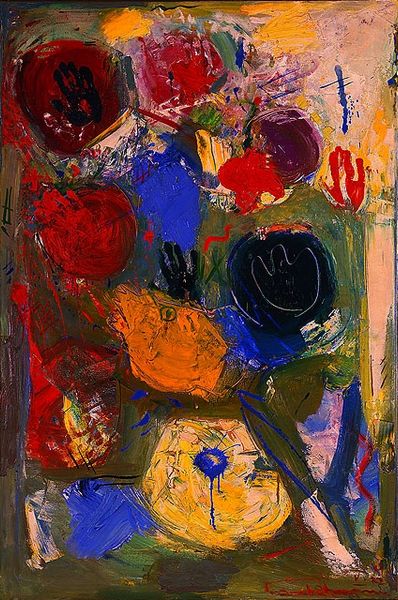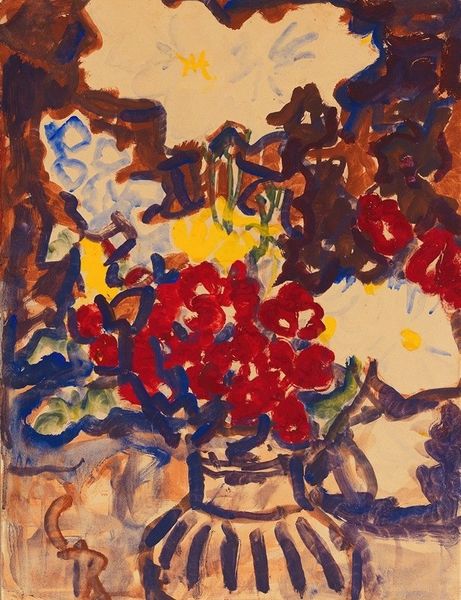
Copyright: William H. Johnson,Fair Use
Editor: So, this is William H. Johnson’s "Still Life—Flowers," painted in 1938, using oil paint. I’m really struck by how vibrant and joyful it feels, despite the somewhat muted background. It’s like a burst of pure energy. What stands out to you most in this work? Curator: The directness of Johnson’s approach is immediately apparent. Notice how he builds form through blocks of colour, almost like a mosaic. But let’s think about flowers as a long-standing symbol in art history. What do they represent to you? Editor: Well, I guess beauty, fragility… maybe even a sense of fleeting time? Curator: Exactly. Flowers are transient, their beauty temporary. In this context, consider Johnson’s personal life at the time. He was experiencing both artistic success and profound personal loss. Could this vibrant yet fleeting bouquet symbolize something more? Editor: You mean, like a memento mori, a reminder of mortality hidden beneath the bright colors? The colors do seem almost urgent now that you mention that. Curator: Precisely! It's this tension that makes the piece so compelling. The impasto, the thick application of paint, adds another layer – a physicality that speaks to the present moment, the act of creation itself. Editor: I hadn’t considered the impact of the paint texture itself as contributing to that feeling of immediacy. Thank you. Curator: And consider that in some traditions, each flower type carries its own specific meaning. Perhaps Johnson subtly incorporated these symbolic meanings. Editor: This makes me want to research more about both flower symbology and the context of Johnson’s life when he created this painting. Curator: It certainly is a multi-layered piece, inviting further contemplation.
Comments
No comments
Be the first to comment and join the conversation on the ultimate creative platform.

